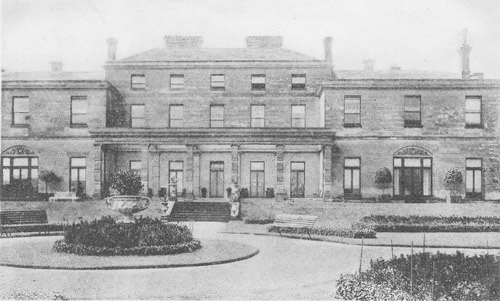Canwell Hall
Staffordshire
| Location | Canwell | ||
| Year demolished | 1957 | ||
| Reason | Surplus to requirements | ||
| See all images: | Gallery | ||
| << Back to the main list |
Canwell Hall, located near the border of Warwickshire and Staffordshire, five miles southwest of Tamworth, was originally the site of Canwell Priory, which was abolished in the 16th century during the Reformation.
 The Priory was included in Cardinal Wolsey's list of monasteries 'not worth retaining'. Once sold off, the land passed through the hands of several aristocratic families. Notable among these were the Harmans (1528–1590), the Pearshalls (1590–1660), and eventually the Lawley family, who retained ownership for approximately two centuries.
The Priory was included in Cardinal Wolsey's list of monasteries 'not worth retaining'. Once sold off, the land passed through the hands of several aristocratic families. Notable among these were the Harmans (1528–1590), the Pearshalls (1590–1660), and eventually the Lawley family, who retained ownership for approximately two centuries.
The Lawleys established themselves as significant landowners in the area, amassing over 2,000 acres of local land through inheritance and purchase. By the early 18th century, a substantial dwelling stood on the site, as indicated by a 1730 inventory listing 39 well-furnished rooms. However, the nature and occupants of the Hall fluctuated over time. An 18th-century description by Stebbing Shaw recounts a "curious old fabric" with Gothic ornaments, altered around 1759 to present a plain facade. This was replaced in the mid-1790s by a new Hall, built by Sir Robert Lawley under the direction of architect James Wyatt. This new mansion was a significant undertaking, reportedly costing £60,000, but success with Stebbing-Shaw praising:
'the stair—case an unique specimen of taste and elegance ...beautiful ornaments and a cupola'. A 'most admirable library, of large dimensions' and 'The views from the house and grounds are very extensive, bold and beautiful, over the wildly—tossed hills at Hints, towards Lichfield, and over Tamworth.'
Despite their holdings, the Lawleys' direct association with Canwell waned. By the late 18th and early 19th centuries, their interests shifted toward Yorkshire, particularly after advantageous marriages brought them substantial estates there. This diminished their presence in Staffordshire, with Canwell Hall frequently let to tenants.
The estate changed hands in 1872 when Sir Beilby Richard Lawley, the 9th Baronet, sold it to Abraham Briggs Foster, a wealthy industrialist from Yorkshire. Under Foster's ownership, the estate gained a philanthropic dimension, including support for a local school established in 1885. Foster’s son, Philip, continued this legacy by funding the construction of a church in 1911.
After Abraham Foster's death in 1904, the estate was eventually sold in 1920 to the City of Birmingham. It served as a rehabilitation center for First World War soldiers before being subdivided into smallholdings. The Hall later became a children's hospital, remaining in use until its final demolition in 1957.